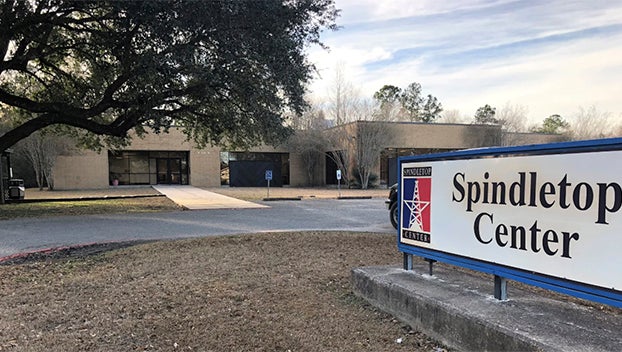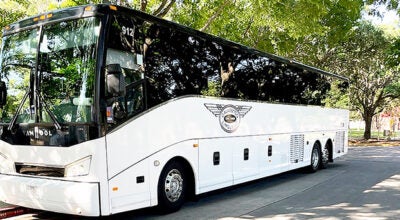What Made Orange Great: The Stark family’s lesser known support of Orange’s economy
Published 6:45 am Wednesday, September 1, 2021
|
Getting your Trinity Audio player ready...
|
By Mike Louviere
On November 9, 2004, Roy Wingate gave an address to the Orange County Historical Society. His address was about the contributions that the Stark, Lutcher, and other families made to keep the economy in Orange viable by keeping men and women employed.
The Stark and Lutcher families made multi-millions in the years from 1880 to 1933 when the great lumber mills were in operation. There were other families that profited as well. What is not well know or overlooked is how those families gave back to Orange. Wingate’s address gave details about the efforts of the wealthy families to keep jobs for Orange residents.
In September 1905, the Orange Ice, Light and Water Company was incorporated. This was a new corporation that took over the existing company. This was done in order to expand and improve services. The original board of directors included Sam C. Trimble, W.H. Stark, H.J.L. Stark, J.W. Link. L. Miller and P.B. Curry.
In 1919, Miller dropped out and all the stock became owned by W.H. Stark, H.J.L. Stark, Mrs. Frances Ann Lutcher, Mrs. Miriam Stark, and Mrs. Carrie Brown.
They increased capital in 1919 and again in 1923. Capital was increased to $500,000 and indebtedness to shareholders was $350,000. It was clear they were not making money in this venture. In 1925, the assets were sold to G.H. Clifford or to his nominee, Gulf Stats Utility Company. There are few records of profits, but the benefits to the community were great.
On April 20, 1917, Articles of Incorporation for Southern Dry Dock and Shipbuilding Company were approved. The original directors were F.W. Hustmyre, F.H. Farwell. S.M. White, T.F. Coyle, and W.H. Tippin. H.J.L. Stark was an original stockholder.
In 1922, the name changed to the Orange Car and Steel Company. Ownership changed and W.H. Stark and his wife, Miriam became major shareholders. The company did not make money. Losses were incurred in 1931, 1932, 1933, 1934, and 1935. These were the Depression years. The estates of W.H. and Miriam Stark included the stock at no value in 1940 about 1940 the company dissolved showing assets of $95,000 and a debt to Lutcher and Moore Lumber Company of $803,080.93. From looking at old records, it appears that W.H. Stark just wanted to keep men working.
Articles of Association were filed on August 20, 1920 for the Frances Ann Lutcher Hospital. The cost to build the hospital was $282,394.94. It was a modern hospital equipped with the most modern equipment available at the time, along with a fine surgeon, staff of doctors, and medical specialists. The hospital was built “For the support of a benevolent, charitable and educational institution…. for free treatment of all kinds of diseases, and the educational training of nurses.”
Those who were able to pay were expected to do so. The hospital was created not to be a profitable venture. It was a result of Mrs. Lutcher’s concern for the need of a hospital in Orange, it was a gift to the community. H.J.L. Stark was the guiding light in getting the hospital and keeping it open for so many years.
In 1901, work commenced on digging irrigation canals to supply water to Orange County rice farmers. The majority of the shares in the Orange County Irrigation Company were held by W.H, Stark and Dr. E.W. Brown. Only sparse records remain, and they show little evidence of profit. Rather, they indicate an effort by the Stark and Brown families to keep the canals open for the benefit of Orange County rice farmers.
In 1933, the Orange County Water Company, Incorporated was created. In 1934, W.H. Stark deeded the canals to the new organization. Many rice farmers made a living during this time, but there is little evidence that W.H. Stark made a profit.
In 1954, the Orange County Water Company sold all of its holdings to the Sabine River Authority.
At the beginning of the 20th Century there were many sawmills operating in Orange. It is probable that there were numbers of people coming into Orange to do business. There are references to the Orange Hotel Company, but no accurate records remain. It appears that W.H. Stark may have been president of the company. Possibly Mrs. Lutcher and the Brown family were also involved.
There are articles of incorporation filed on December 30, 1918 for the Sabine Hotel Company. Stock was divided equally between W.H. Stark, L. Miller, H.L. Brown, F.A. Lutcher, and F. H. Farwell. This is the company that constructed the Holland Hotel.
By 1935, the property had deteriorated, and a new hotel built, it was called the New Holland Hotel.
The minutes of a meeting held in March 1958 show that the hotel company never made a profit. The Stark family owned 80% of the stock, the Brown family owned 20%.
An audit showed the Holland Hotel lost $16,857.13 in 1956 and $17,158.45 in 1957. The deficit value in 1957 was $72,546.90. The hotel had been closed in 1955.
H.J.L. Stark made a settlement with the Brown interests and the corporation was dissolved in 1957.
In 1929, the Sabine Packing Company began operations. It was a public slaughterhouse. The company was owned by W.H, Stark and H.J.L. Stark. It was started to provide employment for local residents. It became important after the Lutcher and Moore Lumber Company ran out of timber and closed. The Orange Pulp and Paper Company closed, and the shipyards had closed after the boom of WWI.
One of the government programs started in the Depression era involved the packing house. The government bought a large house in Orange and installed a large kitchen with steam heated pots. They bought cattle and had them delivered to the Sabine Packing Company. They were butchered and the meat removed from the bone. The meat was then taken to the kitchen in Orange, processed and canned.
The packing house provided jobs for men and the kitchen employed women and men.
People who had no jobs could sign up for “relief. They could go to the kitchen and receive a large bag with canned meat, flour, dried beans, sugar, and other items.
There are no records of profit and loss for the period the government used the packing house for the food programs. There were losses recorded for the years 1936 and 1937. It appears the venture was begun to help the community. The company sold all its assets for $10,000 to H.J.L. Stark and dissolved in December, 1938.
The company that had the greatest impact on Orange in the depression years was the Orange Products Company. It started in 1921 and was a project of H.J.L. Stark and his father, W.H. Stark. They felt that 500 truck farms could sell their produce to the canning plant. They planned to can mustard and turnip greens in the fall, beans and peas in the spring. The first spring there were 10,000 cases of canned beans shipped from the canning plant. Del-Dixi was adopted as the trade name, and they stated they could can anything that could be grown in Orange County.
The company organized as a voluntary association with a capital of $160,000. During the first five years of operation the company lost money. In 1932 the loss was $41,555,49 each year after that there were losses of similar amounts until 1936 when the loss was “only” $24,417.24.
World War II took away both truck farmers and employee and operations went down drastically. In 1957 the company merged with another company and became the Del-Dixi Food Corporation.
The Orange Investment Company operated from 1911 to 1957. For years it was Orange’s only institution comparable to a savings and loan company. It made numerous loans to people for home building and purchasing. It borrowed heavily from the Lutcher and Moore Lumber Company. Apparently, the company never made a profit. It was another Stark venture to benefit the residents of Orange.
In addition to ventures that provided jobs, the Stark family has always been generous in deeding property at no cost when the state, county, of a municipality needed land for projects such as highway expansion.
The Stark family made millions from the forests surrounding Orange. Orange was fortunate that the family cared enough about the town and its residents to create ways to try to keep employment in Orange after the timber was harvested and the sawmills closed. It is likely that their efforts had much to do to keep Orange from becoming a ghost town.






